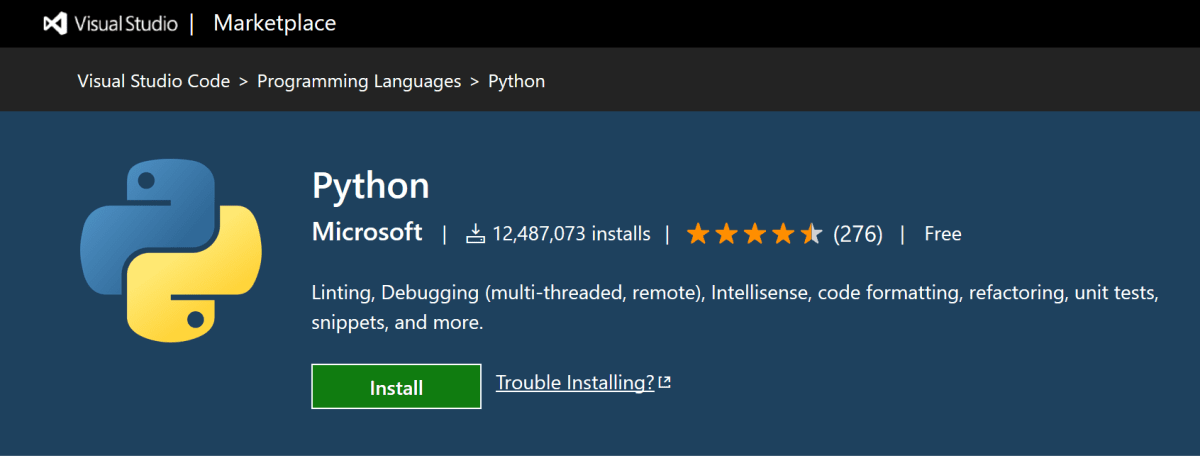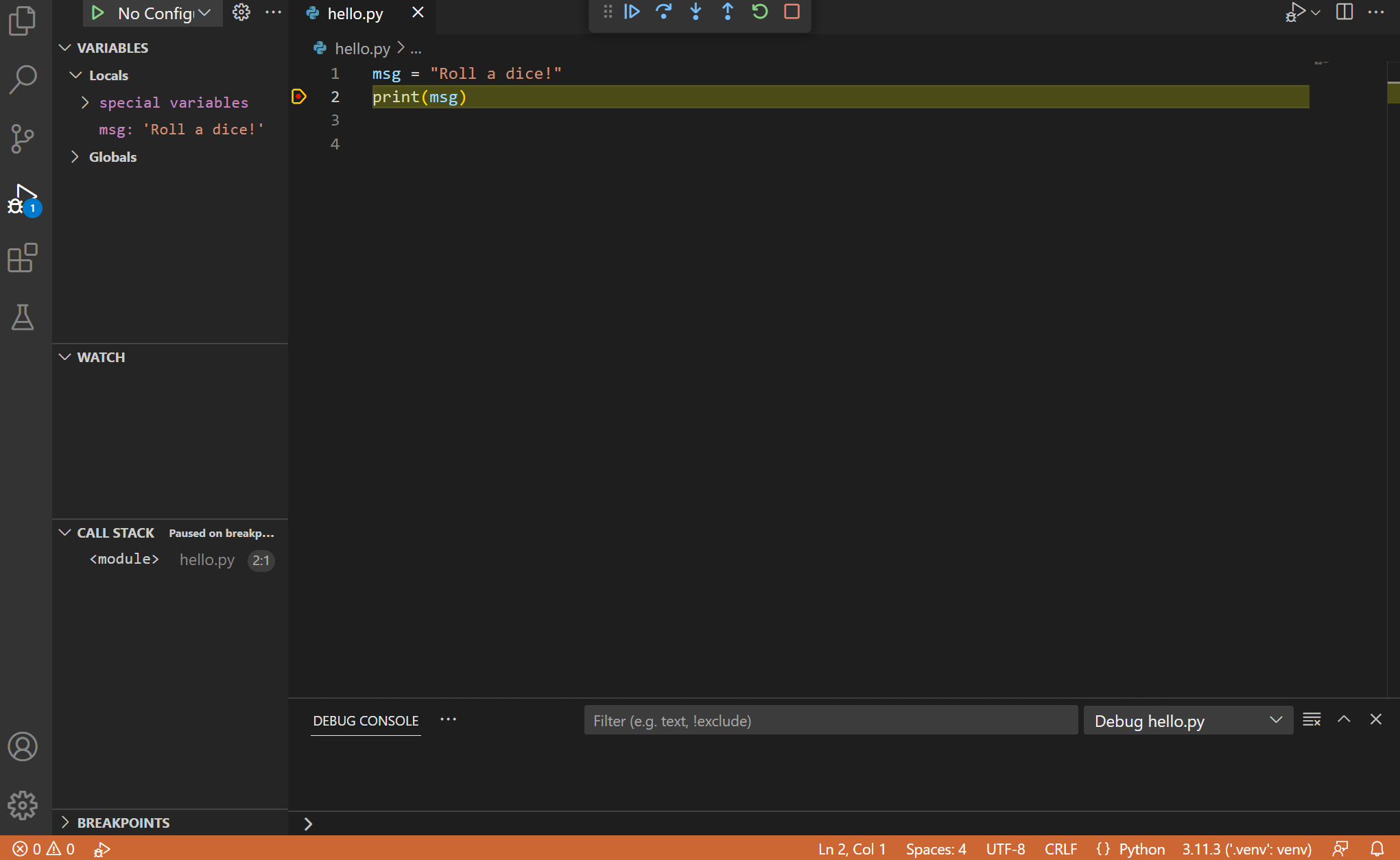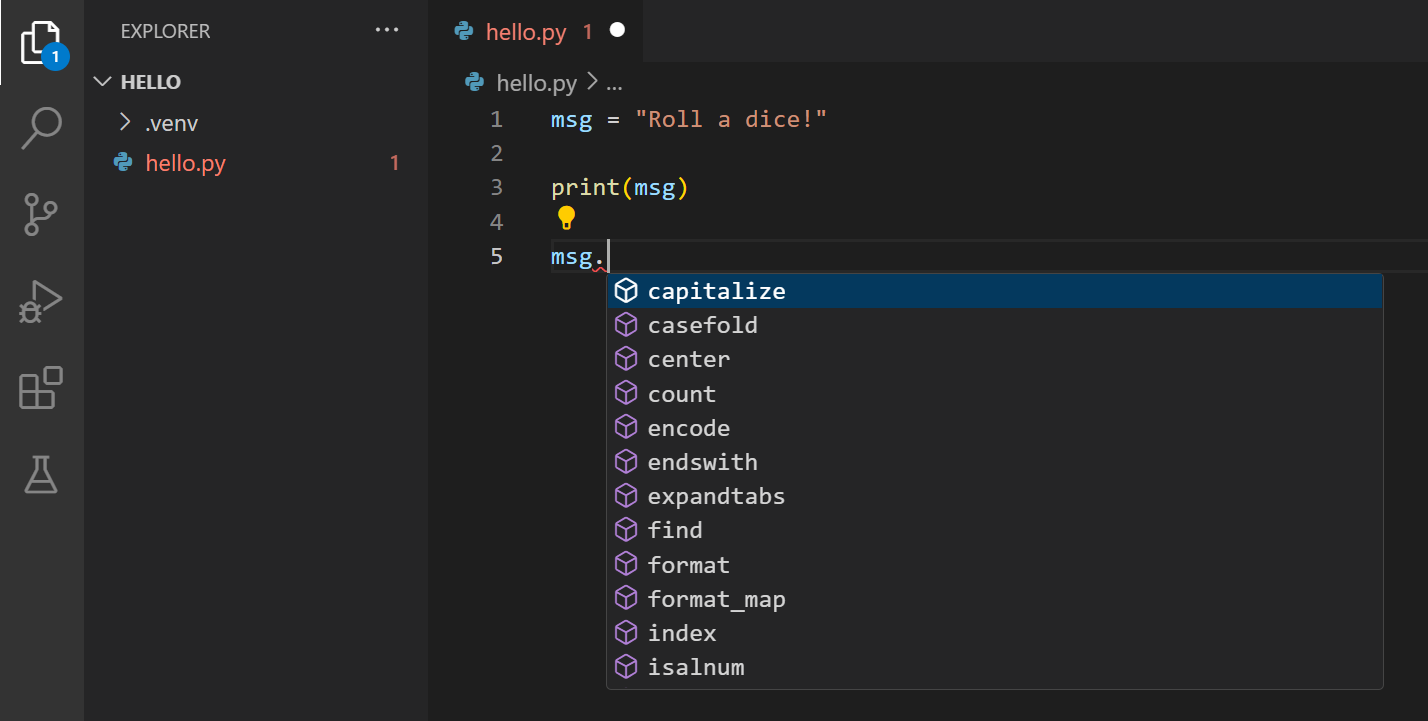

#How to run python in visual studio code#
We have added a new Python toolbar that allows you to work with Python code without having to create or open a Python project. In previous versions of Visual Studio we required you to create a Python project in order to work with Python code. If you prefer to use your own conda version you can specify the path to conda.exe in Tools > Options > Python > Conda. Note that if both the Visual Studio bundled Miniconda and Anaconda are installed, we will use Miniconda to create conda environments.
#How to run python in visual studio install#
If you still want to continue using a full install of Anaconda, you can install Anaconda yourself and continue working with Anaconda by selecting your Anaconda install as the active Python environment. Miniconda allows you to create conda environments on-demand using the Add environment dialog. To address these problems, Anaconda has been removed in favor of the much smaller Miniconda, which is now installed as a default optional component in for the Python workload: Previous versions of Visual Studio allowed you to install Anaconda through the Visual Studio Installer, and while this enabled you to easily acquire Python data science packages, this resulted in large Visual Studio installation times and sometimes caused reliability issues when upgrading versions of Visual Studio. You can continue working while the environment is being created.

The dialog also allows you to add existing virtual environments on your machine, or to install new versions of Python.Īfter clicking on Create, you will see a progress notification in the status bar, and you can click the blue link to view progress in the Output window: You can also use the Add environment dialog to create a conda environment, using an environment.yml file, or by specifying a list of packages to install: In this case clicking on ‘Create virtual environment’ will show a new Add environment dialog box, pre-configured to create a new virtual environment using the provided requirements.txt file: This improves discoverability and enables new capabilities such as the ability to create conda environments on-demand and support for Open Folder described later in this post.įor example, when opening a project that contains a requirements.txt file or environment.yml but no virtual environment or conda environment is found, you will be prompted to create an environment with a notification: To make it easier for you to create virtual or conda Python environments for your project, the ability to create Python environments has been moved from the Python environments window to a new Add environment dialog that can be opened from various parts of Visual Studio. We’ll take a closer look at these new features in the rest of this post. We’ve also enabled Python support for Visual Studio Live Share.

Hopefully support for more languages will be coming soon, but at least you can run any compiler or interpreter against your code using tasks.Today we are releasing Visual Studio 2019 Preview 2, which contains new features for Python developers to improve the experience for managing Python environments and enable you to work with Python code without having to create a Python project. I’ve only played with VSCode for a little while, but it seems solid and friendly. The result of all this is that you now can run a python script and have the output displayed next to the code, as shown below. You can find out more about tasks in VSCode here. If you need to select a task do Ctrl+Shift+P, type Run Tasks, select python and press Enter. If you put another task at the top of the settings file then that task will be run. To run the task you can simply do Ctrl+Shift+B, as you’ve only defined one task for this folder. args is the HelloWorld program to compile. Show the output window only if unrecognized errors occur. Comment out the first example task and put the following Python task at the top of the file and save it. settings and a file called tasks.json where you will configure your task. The do Ctrl+Shift+P, then Configure Task and press Enter. In Python this is print "Hello World!".įirst go and open up VSCode on an empty folder via the menu steps File -> Open Folder. So let’s dive in and set-up a task that runs the traditional "Hello World!" program within VSCode. It’s a feature called tasks and while the examples give are for compiling code, you can pretty much just run any program against the code you are editing in VSCode.

There isn’t much support for Python in Microsoft new code editor Visual Studio Code (VSCode), but there is a neat way to run your Python code right inside VSCode.


 0 kommentar(er)
0 kommentar(er)
